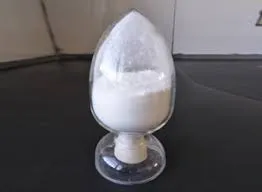Chemical Foaming Agents for Plastics An Overview
The use of chemical foaming agents (CFAs) in the plastics industry has garnered significant attention due to their ability to improve materials’ properties and reduce production costs. This article explores the types, mechanisms, benefits, and applications of chemical foaming agents, shedding light on their role in modern plastic manufacturing.
Understanding Chemical Foaming Agents
Chemical foaming agents are substances that release gas when exposed to heat or moisture during the processing of plastics. This gas generation results in the formation of a cellular structure within the plastic matrix, leading to foamed materials. CFAs can be broadly classified into two categories endothermic and exothermic agents.
- Endothermic Agents These CFAs decompose upon heating, absorbing heat and producing gas, typically nitrogen or carbon dioxide. Common examples include sodium bicarbonate and ammonium bicarbonate. The endothermic reaction allows for effective control of foam density and structure.
- Exothermic Agents These agents generate heat during decomposition, which can lead to higher gas production rates. Examples include azodicarbonamide and sodium borohydride. Exothermic foaming agents are often preferred for applications requiring robust cellular structures.
Mechanisms of Action
The mechanism of action of chemical foaming agents involves precise thermal and chemical processes. Upon heating during the processing of plastics, CFAs decompose, releasing gas that forms bubbles within the polymer matrix. The formation of these bubbles leads to a reduction in the density of the final product.
The control over the foaming process is crucial. Factors such as temperature, processing time, and the concentration of the CFA influence the characteristics of the final foam. For example, increasing the CFA concentration can enhance the foam formation, but it may also compromise the mechanical properties of the finished product if not managed correctly.
Benefits of Using CFAs
The incorporation of chemical foaming agents in plastics offers several advantages
1. Weight Reduction Foamed plastics are significantly lighter than their solid counterparts, which is particularly advantageous in industries such as automotive and aerospace, where weight reduction is crucial for efficiency.
chemical foaming agents for plastics

3. Cost Efficiency By reducing the amount of raw material required to produce a plastic product, CFAs contribute to lower material costs. This is particularly beneficial in high-volume production scenarios.
4. Enhanced Mechanical Properties Properly formulated foams can exhibit improved rigidity and impact resistance compared to solid plastics, thus broadening their application scope.
5. Sustainability With the rising emphasis on sustainability, researchers are developing bio-based foaming agents derived from renewable resources. These agents help create eco-friendly foamed products, aligning with the global push for sustainable manufacturing practices.
Applications of Chemical Foaming Agents
The versatility of CFAs allows their use across various applications, including
- Packaging Foamed plastics are widely used in the packaging industry to provide lightweight yet protective packaging solutions for fragile items.
- Construction In the building industry, foamed materials are utilized for insulation panels, roofing materials, and floor underlayments, capitalizing on their thermal insulation properties.
- Automotive The automotive sector employs foamed plastics extensively for components such as dashboards and seat cushions. The lightweight nature of foamed materials contributes significantly to overall vehicle efficiency.
- Consumer Products Many everyday products, from household items to sports equipment, leverage the properties of foamed plastics to enhance functionality and performance.
Conclusion
Chemical foaming agents play a pivotal role in the evolution of plastic materials, offering a combination of performance enhancements and cost savings. As industries continue to focus on weight reduction, improved insulation, and sustainability, the significance of CFAs will only increase. The ongoing research into new formulations and applications promises a future where chemical foaming agents are integral to innovative and environmentally-friendly plastic products. As the demand for lightweight and efficient materials grows, the contributions of chemical foaming agents will undoubtedly shape the landscape of the plastics industry for years to come.

